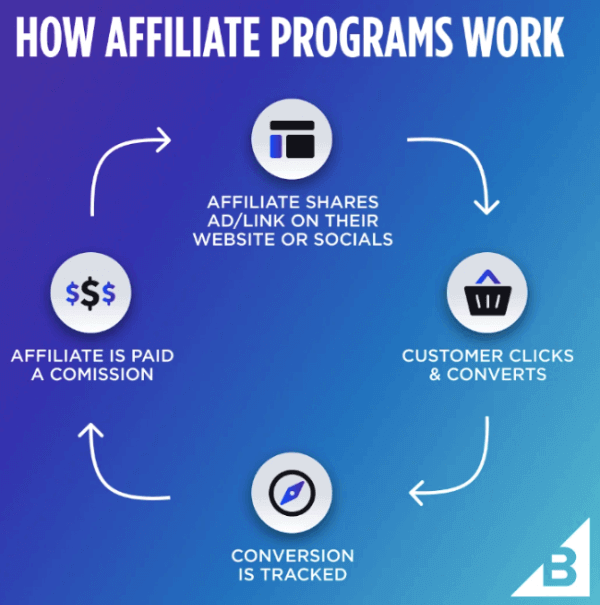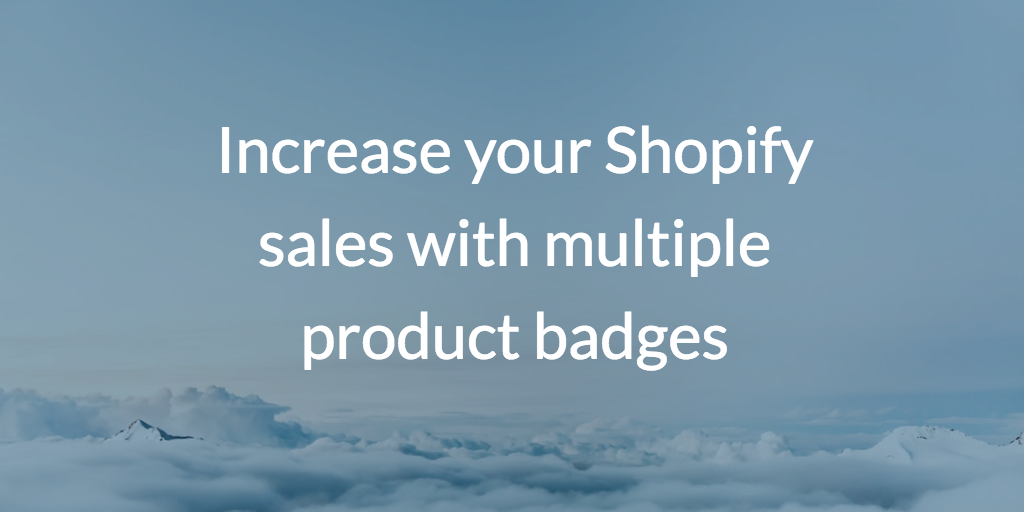How To Advertise Your Shopify Store: 8 Proven Tactics

You’ve identified a high-potential e-commerce niche with attractive margins and a captive audience waiting to snap up your products.
You’ve built an online store to showcase those products and convert visitors into paying customers.
Maybe you’ve even started generating sales.
Either way, now’s the time to advertise your Shopify store so you can start increasing site traffic and building a loyal audience.
That’s exactly what we’ll discuss in this article…
Understanding Shopify Store Advertising
Advertising a Shopify store is about using one or more promotional channels to capture the attention and interest of people in your target audience, with the ultimate goal of persuading them to visit your website and buy your products.
Because you’re not going to grow your business by sitting back and hoping customers will stumble across your store by chance.
Some promotional methods involve on-site activity — things like writing blog posts and optimizing key pages to bring in search traffic. Others involve off-site channels such as advertising on social media sites, running pay-per-click campaigns on search engines, and targeting customers through their inboxes via email marketing.
Benefits of Shopify Store Advertising
Whatever tactics you choice, the benefits of successful Shopify store advertising are clear:
- More brand awareness
- More store traffic
- More sales
- More loyal customers
- More revenue
Of course, success isn’t guaranteed.
If it was, we’d all be billionaires.
But there are steps you can take to improve your chances of running effective ad campaigns…
Key Considerations Before You Start Advertising
As the old adage goes: “Fail to prepare, prepare to fail.”
While it’s totally possible to create a promotional email or build a social media ad campaign in a matter of minutes, you’re far more likely to achieve the desired results if you take the time to consider these essential factors:
- What are your campaign goals? Sure, you want to make money. But what, specifically, does that look like? You could be aiming to promote a sale, launch a new product, encourage existing customers to join your referral program, or any number of other objectives. Get your goals straight before you go any further.
- Who are you targeting? Most advertising campaigns aren’t aimed at everyone in the world; they target customers in a specific niche (like new parents, or casual gamers, or fitness fanatics). Defining your target audience will help with various other elements of your campaign, from the tone of voice you adopt to the channels you leverage…
- Which channel(s) should you use? Unless you have a huge budget and a large marketing team, you’ll probably see better results by focusing on just one or two channels at a time. But which ones? That all depends on the audience you’re trying to reach. Where do they hang out online? And are they more likely to be persuaded by a social ad, a marketing email, an informative blog post, or something else?
Advertising Strategies for Shopify Stores
By this point, you should have a clear idea of the goal you’re trying to achieve through advertising your Shopify store.
Now, let’s take a look at eight strategies you can use to make it happen…
1. Google Ads
Every second, Google processes tens of thousands of searches — some of which will inevitably be related to the products you sell.
Wouldn’t it be fantastic if you could show up in those search results?
That’s where search advertising comes in.
Also known as paid search advertising and search engine advertising, it involves targeting people who are searching for specific keywords and phrases, or visiting certain websites or apps.
For instance, this search ad shows up under queries for “ghostbusters t shirt”:

Every time someone clicks that ad, the advertiser pays Google a small fee — hence the term “pay per click”.
Google search ads have an average cost per click (CPC) of $4.22.
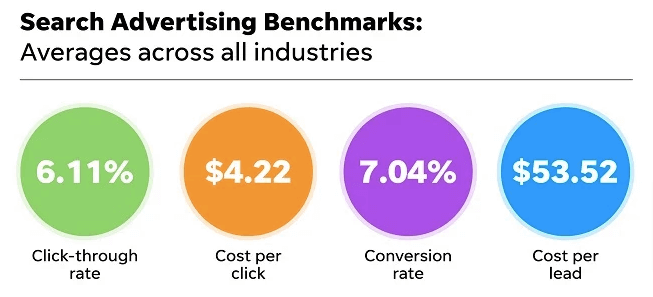
That’s a lot to spend on a single visit to your website, especially if your margins are tight, so you’ll need to keep a close eye on your spending and target high-converting keywords.
Of course, Google isn’t just a search engine.
As such, there are lots of other “flavors” of Google ads you can use to promote your Shopify store.
In total, there are 22 types of ad campaigns available through Google. Aside from search ads, the most relevant to Shopify merchants are:
- Shopping ads: These are visual ads that appear in Google’s search and shopping tabs, populated with data pulled from product feeds submitted by advertisers through the Google Merchant Center.
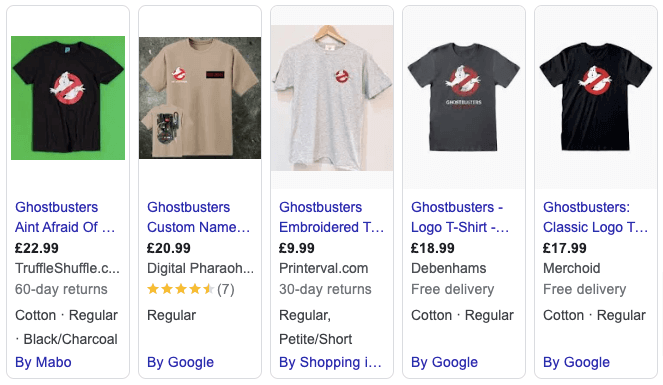
- Display ads: These visual ads appear on websites within Google’s Display Network. Rather than targeting potential customers via their search queries, you’re trying to reach them based on the types of sites they visit. As such, display campaigns are more about brand awareness than immediate sales.
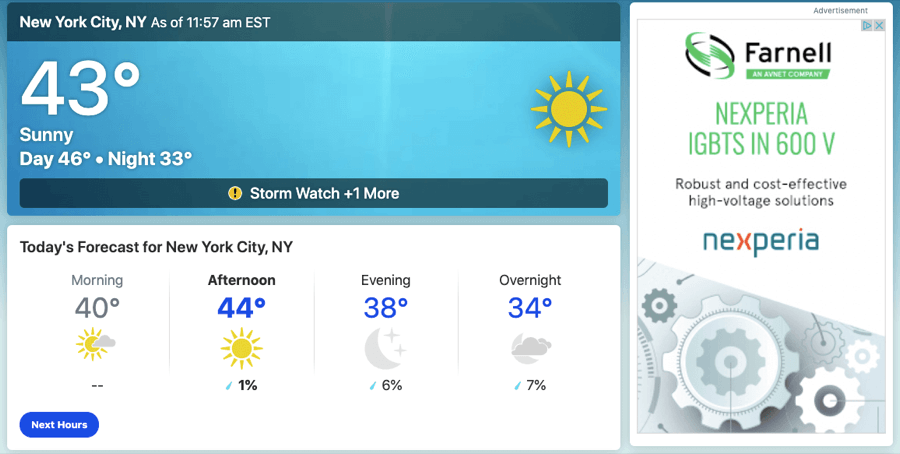
- Video ads: As you can probably guess, these are video ads that pop up on YouTube or on sites across Google’s Display Network. Again, they’re generally better for building your brand than closing the deal there and then.
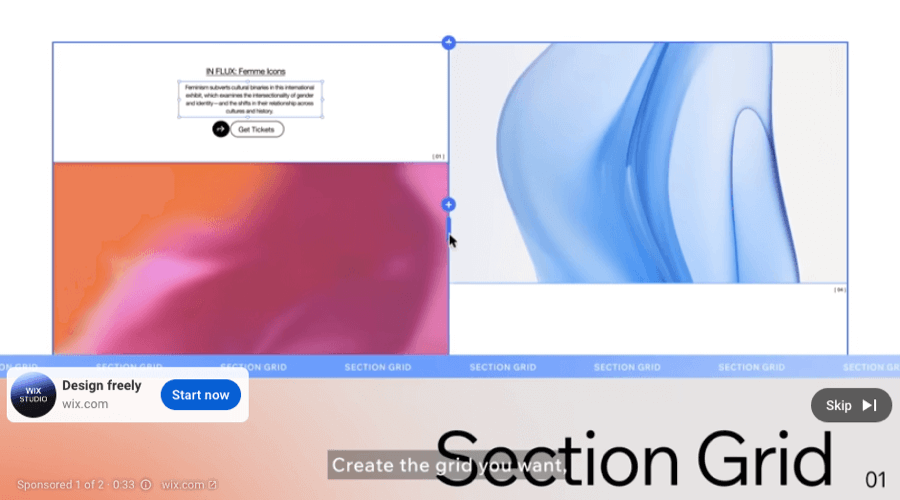
- Performance Max campaigns: An automated campaign type that takes the assets you provide and promotes them anywhere across Google’s network. This type of campaign uses machine learning to find the highest-performing combination of assets and placements.
Which campaign type is right for you?
Naturally, that depends on your goals and audience.
But if this is your first time dipping a toe in the deep waters of Google ads, we recommend starting with a simple search ad campaign, setting a tight daily budget (say $15 – $20), and choosing keywords with plenty of buying intent.
Pro tip: Target longer-tail terms for lower competition and cheaper CPCs. For instance, “medium white ghostbusters t-shirts for men” will likely be a lot more affordable than “men’s t-shirts”.
2. Social Media Advertising
Given that 58% of US shoppers have purchased a product they’ve seen on social media, it’s no surprise that brands are prepared to sink huge sums into advertising on social platforms.
While there’s no shortage of social networks, not all are a natural fit for Shopify merchants.
So if you’re new to social media advertising, we’d recommend focusing on one or two of the following platforms:
- Facebook: Still the busiest of all social networks, with more than two billion daily active users.
- Instagram: 47% of global consumers say Instagram is the social platform they use most when looking for buying inspiration. That’s more than any other network.
- TikTok: Two-thirds of users say TikTok inspires them to shop — even when they weren’t planning to.
Okay, so you know which social networks to target. But what should your adverts look like?
Here are some best practices to help you create high-converting social media ads:
- Show your products in action: Lifestyle imagery that shows your products in a realistic-looking setting is more impactful on social media than the typical e-commerce product photos on your Shopify store. Here’s an attractive example from bedding brand Brooklinen:
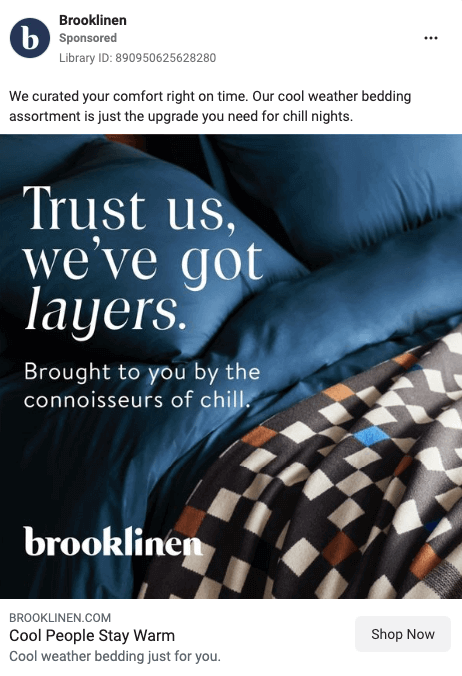
- Add branding at the start of videos: Most viewers will only watch your video ads for a matter of seconds, so be sure to get your name or logo in as early as possible — ideally in the opening frame, just like in this example from RXBAR:
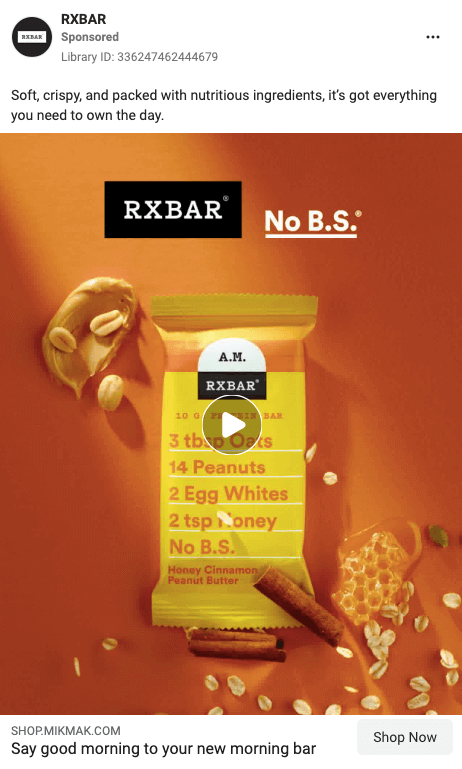
- Create native content: Increasingly, audiences prefer social ads that don’t feel like ads. For instance, this ad from Warby Parker looks like a regular TikTok or Instagram Reel, which creates a more engaging experience for viewers:
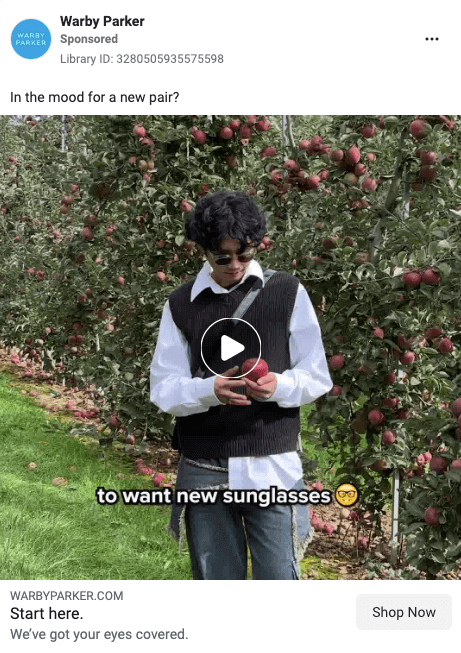
3. Content Marketing
“Content” is a pretty broad term, covering everything from blog posts to infographics to videos.
All of that stuff can help you raise awareness of your brand, build stronger connections with your audience, and highlight the features and benefits of your products.
However, it’s important to understand that content marketing isn’t a standalone promotional strategy — it works in tandem with other tactics and channels.
You might write blog posts as part of a broader SEO strategy, create product explainer videos to share on social media, or promote your best customer success stories via email marketing.
So while content on its own won’t drive a ton of sales and revenue, it’s the fuel behind many of your other campaigns.
That’s why it’s worth investing in.
4. Email Marketing
For every $1 marketers spend on email marketing, they generate an average return of $36.
For Shopify stores, Email is the leading channel for conversions, with an an average rate of 4.29%.
No other channel comes anywhere close to that sort of ROI.
There’s just one catch to email marketing: it takes time to see results.
Some of the other strategies in this article (like social media and Google ads) can generate returns fast. That’s not the case with email, because you need to build a marketing list before you get started.
Give yourself the best chance of capturing email addresses by adding a popup to your homepage and other key pages.
You should also consider adding a signup incentive.
Only about one-third of consumers are willing to share their email addresses with a given company for no incentive. But that proportion triples when they’re offered an attractive “value exchange”.
For instance, watch brand MVMT offers customers a 15% discount in return for their email address:
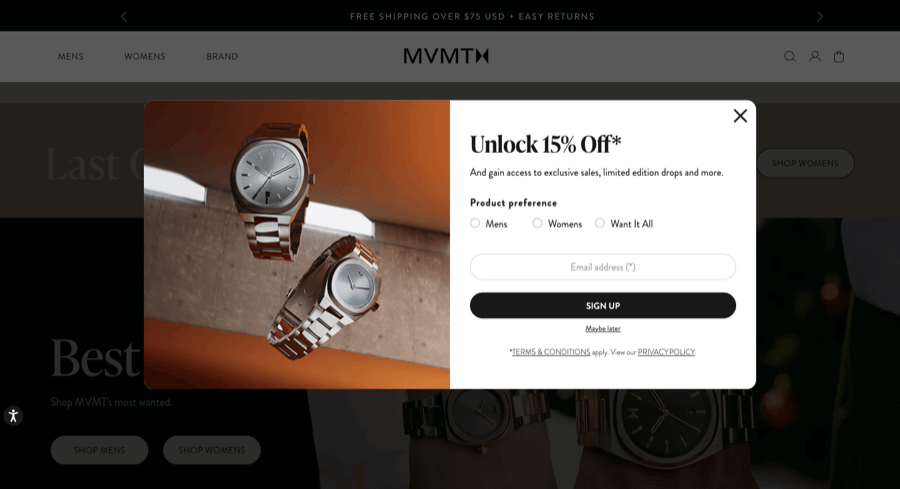
If your margins are too tight to offer a discount, consider a different type of incentive, like free shipping, free product samples, or early access to new products.
Once you’ve got a bunch of names on your email list, you can target them with promotional content that compels them to click and buy. Consider these tactics when building email campaigns:
- Share your best reviews: 98% of shoppers say reviews are an essential resource when making purchase decisions, so it makes sense to share your most glowing ones in your emails, like this example from Nikura:
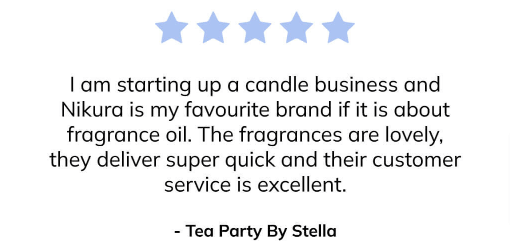
- Incentivize the first purchase: Some people who sign up for your email list won’t have bought from you yet. Persuade them to take action by offering a discount for first-time buyers, just like kombucha brand Hip Pop does here:

- Share personalized offers: 71% of consumers expect companies to deliver personalized interactions, so give them what they want in your marketing emails. In this example, flower delivery brand Bloom & Wild uses the customer’s order history to remind them of an upcoming birthday — and even provides a personalized discount to persuade them to buy now:

Pro tip: Looking to add personalized product options to Shopify? See our guide: The Best Shopify Product Personalization Apps
5. Referral Programs
Customers who buy from you after being referred by other customers are worth their weight in gold, with one study revealing they generate higher profit margins, are more loyal, and show a higher customer lifetime value.
Building and promoting a high-performing referral program is all about nailing two key elements:
- Incentivizing the referrer: Customers need a compelling reason to recommend your brand to their loved ones, such as a fixed discount on their next purchase.
- Incentivizing the referred customer: Similarly, give the referred customer a reason to buy, like free shipping or a discount on their first purchase.
Once you’ve sorted the finer details of your referral program, you need to tell people about it.
Your best bet is to target your most loyal customers, as they’re more likely to recommend you.
Segment your marketing list by lifetime value or number of purchases, then send your top spenders an email encouraging them to take advantage of your referral offer — just like this example from kitchenware brand Material:
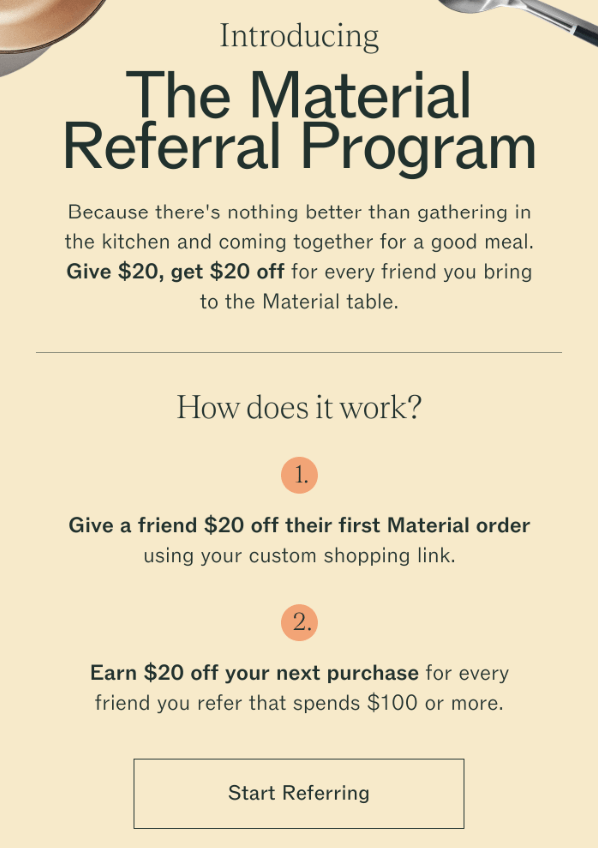
6. Search Engine Optimization (SEO)
Globally, 44% of customer shopping journeys begin on search engines — more than any other channel or location.
So it pays to get your SEO house in order.
Effective search engine optimization takes a bunch of time and effort, but the results make it all worthwhile. A well-optimized Shopify store can help you build a consistent, long-term source of “free” traffic.
There are a whole lot of elements to e-commerce SEO, but you should be able to make some quick gains by prioritizing these key areas:
- Build a logical site structure: Your site architecture should make it easy for shoppers (and search engines) to navigate your store. A simple e-commerce site structure for a consumer electronics store might look something like this:
- Speed up your site: Fast-loading websites rank better in search. Use Google’s free PageSpeed Insights tool to identify areas for improvement.

- Find relevant keywords: Each key page on your site should be optimized to target one primary keyword (and, optionally, some related secondary keywords). Those keywords should become more specific and commercially focused as you move through your site structure. For instance, the keyword map for a men’s clothing store might look like this:
| Page type | Primary keyword | Secondary keywords |
| Homepage | Men’s clothes | Menswear, men’s outfits |
| Collection page | Men’s jeans | Denim for men, men’s designer jeans |
| Product page | Men’s relaxed fit denim jeans in blue | n/a |
- Add keywords to title tags and meta descriptions: Having built a keyword map, your next task is to add those keywords to the title tag and meta description for each page.

- Add internal links. Internal links are hyperlinks that point from one page on your site to another. Add them wherever relevant — and make sure the text you’re linking aligns with the content on the destination page. For instance, Public Desire includes links to collections within its blog posts:
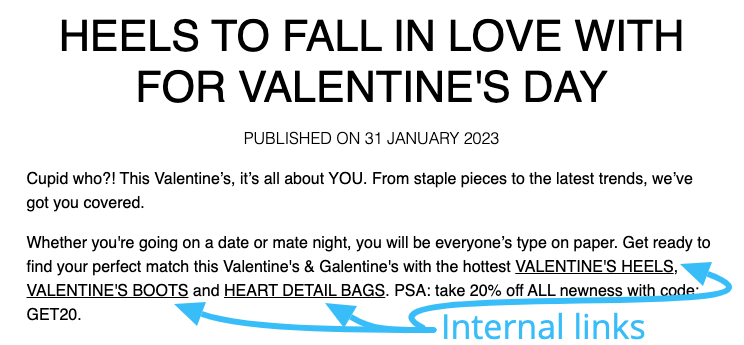
7. Affiliate Marketing
For the uninitiated, affiliate marketing is about encouraging bloggers, social media influencers, publishers, website owners, and other online content creators to promote your store for you.
I know what you’re thinking: “What’s in it for them?”
There’s a simple answer: commission.
When a creator joins your affiliate program, you’ll give them a unique coupon code or referral link to add to their content.
Every time someone in their audience buys one of your products using that link or code, you give the affiliate some kind of monetary reward — either a percentage of the sale or a fixed cash bonus.
Our favorite thing about affiliate marketing is that, from the perspective of a store owner, there’s relatively little financial risk attached — because you only pay your affiliates when they generate sales.
So if they’re not fulfilling their end of the bargain, it doesn’t cost you anything.
Of course, that doesn’t mean you should work with any old affiliate marketer.
While most affiliates are totally legit, there are a few unscrupulous individuals who are happy to say whatever they need to say to close the deal. Even if that means misleading people about your brand or product.
Even though it’s not technically your fault if a third-party affiliate hoodwinks a shopper into buying something they don’t need or want, you can bet the customer will ultimately hold you responsible.
Additionally, you may want to be cautious about adding coupon affiliates like RetailMeNot, since they often get credit for a sale that merchants were going to get anyway.
When a customer sees an "enter coupon" box, they’ll often Google "[brand name] coupon" and land on a coupon affiliate site.
Of course, the site will add their affiliate tracking code to the coupon. So when the customer copy-pastes it, the coupon site earns a commission — despite playing no part in the path to purchase.
For those reasons, we recommend being selective about the affiliates you work with.
When someone applies to join your affiliate program, vet their online presence to make sure you only work with affiliates who are a good fit for your brand and audience.
Alternatively, you can join an affiliate network — essentially, an intermediary that gives you access to thousands of approved affiliate publishers. There are dozens of networks out there, but some of the biggest and most reputable include:
Joining an affiliate network makes it easier to attract high-quality affiliates, plus the network will help with things like sales tracking and commission payments.
However, you’ll have to pay your network partner a chunk of your sales, which will eat into your margins.
8. Landing Page Optimization
A landing page is a destination page that customers arrive on after clicking a link in an ad or email.
Often, the most appropriate landing page will simply be a regular Shopify collection or product page.
But sometimes, it might make sense to create a dedicated, campaign-focused landing page that exists outside of your regular site structure. For instance, you could be:
- Offering a discount that only applies to a small subset of website visitors (so you don’t want everyone to see it)
- Running a seasonal campaign that requires its own, short-term, destination page
- Promoting a complex e-commerce product that needs a detailed explanation, like a subscription service
In this example, meal delivery service HelloFresh built a standalone landing page for a campaign that offered a discount to customers of online sweepstakes and contests company PCH:

Pro tip: See our related guide: How to Increase Landing Page Conversion Rate.
E-commerce landing pages should be optimized for conversions. Use these best practices to turn clicks into sales:
- Add a clear CTA: Make sure your landing page includes at least one call to action that compels visitors to buy now. HelloFresh uses a CTA button containing the phrase “Get Offer”:

- Spell out your value proposition: Visitors to your landing page need to understand why they should buy from you, rather than choosing a competitor or keeping their cash in the bank. Persuade them by highlighting your product’s key features and benefits.
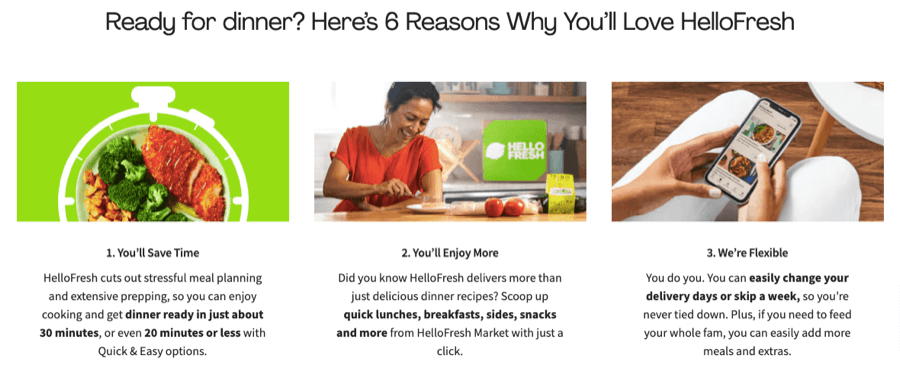
- Share customer reviews and testimonials: We’ve already pointed out the importance of customer reviews. Add them to your landing page to convince shoppers that your product is exactly what they’ve been searching for.

- Share other social proof: Demonstrate that you’re a reputable brand with a high-quality product by sharing industry awards, accreditations, scores from third-party review platforms, and any other social proof you can find.
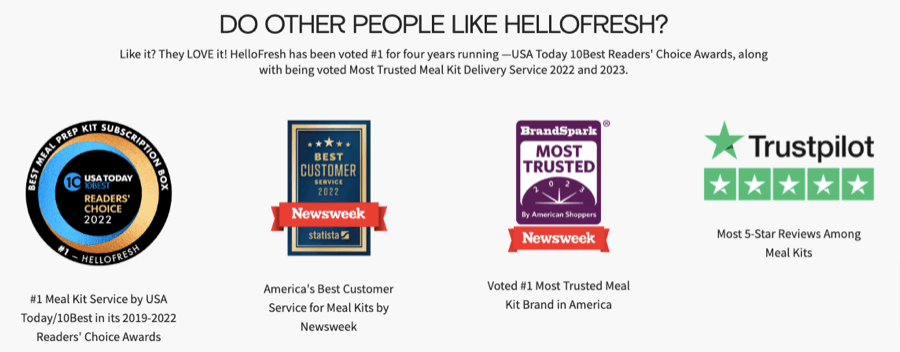
Pro tip: One final point on landing page optimization: don’t add your standard navigation menu to the top of the page. You want visitors to stick around, read the page, and convert — not click elsewhere on your site.
Measuring and Analyzing Advertising Performance
You’ve identified the most effective channels and strategies to advertise your Shopify store and launched your first campaign.
But your work’s not finished.
Now it’s time to analyze how your ads or emails or SEO efforts are performing. Are they generating the expected traffic and sales? Or do you need to rethink your approach?
The specific e-commerce metrics you should track will vary based on the channels you’re using and the goals of your campaign, but here are some potential options:
| Metric | What does it show? | How to track |
| Shopify store traffic | How many people are visiting your store | Google Analytics (or a different website analytics platform) |
| Top traffic sources | Which channels are most effective at generating store traffic | Google Analytics (or a different website analytics platform) |
| New visitor traffic | The proportion of traffic made up of first-time visitors to your store | Google Analytics (or a different website analytics platform) |
| Click-through rate | The proportion of people who see your ads or emails and click through to your site | Email, social media, or Google ad analytics platforms |
| Campaign revenue | How much revenue you’ve earned from a specific campaign | Google Analytics (or a different website analytics platform); Shopify analytics; email, social media, or Google ad analytics platforms |
| Landing page conversion rate | How many people buy something after visiting your campaign landing page | Google Analytics (or a different website analytics platform), Shopify analytics |
By regularly reviewing these metrics, you’ll get data-backed insights into what works for your store and audience (and what doesn’t).
Use these learnings to optimize your existing and future campaigns.
Looking for even more ways to boost the performance of your e-commerce store? Check out our guide: 21 Game-Changing Online Promotions for E-Commerce Success.
Final Thoughts
As you can see, there’s no shortage of ways to advertise a Shopify store.
From affiliate marketing to social media ads to SEO, these strategies can help any e-commerce site to generate more clicks, sales, and revenue. But which channels should you focus on?
There’s only one way to find out: test, test, and test some more.
Try multiple tactics and A/B test your campaigns. And when you find a method that works, do more of it.
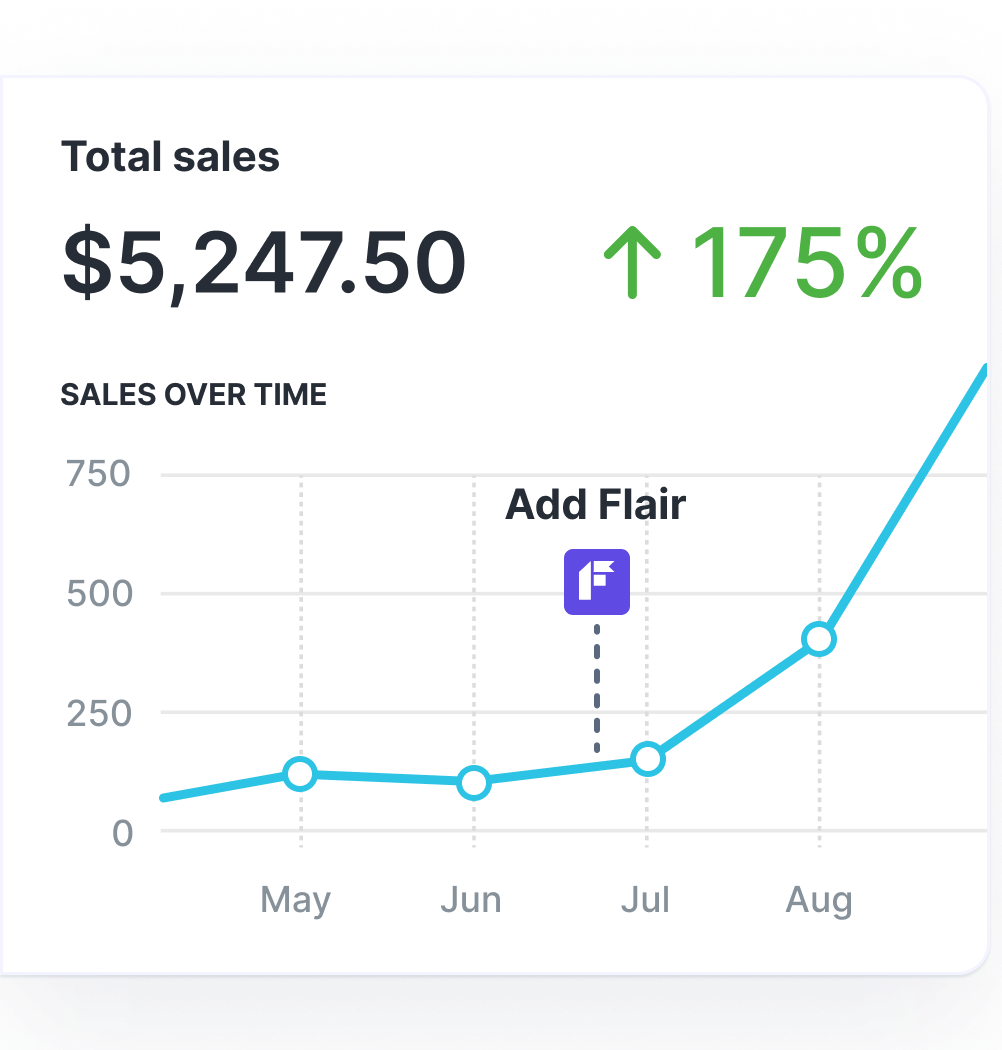
Grow Your Shopify Sales by over 175% with Flair
-
Increase sales using product badges and sales banners
-
Maximize conversions with scarcity, urgency and countdown timers
-
Automate promotions with targeted rules and scheduling



